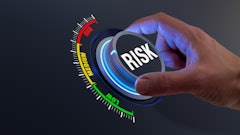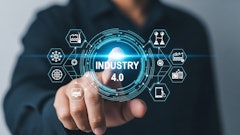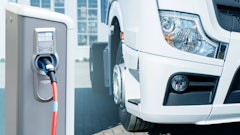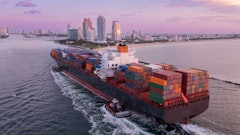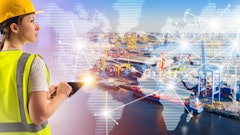
Extreme weather can have detrimental effects on communities and the businesses that operate within them. Hurricanes, fires, floods, and heatwaves aren’t just serious in nature – they also test the resilience of critical infrastructure. Flooded roads, delayed shipments, and damaged inventory are just the tip of the iceberg, with long-lasting destruction causing lengthy recovery times and impacting factory operations, load fluctuations, and the electrical grid. Each event is unique, and every broken link in the chain disrupts entire communities.
Alongside the impact of instability fueled by geopolitical tensions, rising costs, and inventory shortages, the increase in these extreme weather occurrences has forced supply chain resilience to become a top priority for leaders across industries.
With 63% of business leaders planning to increase investment in their supply chains this year, it’s essential that leaders implement AI and intelligent strategies to fortify their operations to withstand the challenges of tomorrow.
The rising impact of extreme weather
In 2021, The Economist reported that children of this generation are seven times more likely to experience extreme weather events than their grandparents. With severe events such as the California wildfires devastating millions just this year, it’s critical that we understand how we can mitigate risk and minimize long-term destruction even in these often unavoidable events.
For example, the energy and utilities sector is undergoing an unparalleled transformation with renewables, nuclear power, electrification, and AI reshaping the industry as we know it. But as we’ve witnessed, severe weather events are causing more frequent sweeping power disruptions to the grid. With the U.S. economy taking an estimated $218 billion hit in 2024 due to natural disasters, the financial incentive to prioritize proactive solutions is obvious.
Pivoting from reactive to proactive efforts
While weather incidents are unpredictable, we expect climate change to increase the likelihood of these events occurring over the next decade. That’s why it’s important for leaders to equip their organizations with the right strategies and tools to navigate both natural disasters and the impact they may have on business operations and their communities. To do this, pivoting from reactive solutions to proactive efforts is essential.
There are several routes to this approach, starting with a holistic assessment to determine what’s working and what is not. And while there isn’t a one-size-fits-all solution to proactive efforts, this path will ensure leaders are maximizing their investments by choosing strategies that will make the most impact.
In the case of the energy and utilities industry, many companies are reinforcing their power lines, upgrading substations, and burying cables underground. A principal subsidiary of the largest power utility in Florida invested in strengthening their powerlines, moving 45% of them underground, creating a 40% increase in service reliability since 2006. Companies are also looking to enhance the resilience of their microgrids. Because microgrids can operate independently from the main grid, they can ensure a constant power supply in a large-scale outage.
The more agile a company can be, the more prepared they are to seize opportunities before disaster strikes. The use of digital twin technology is seeing an uptick in adoption; imagine the power of a virtual model of your entire supply chain. Digital twins allow companies to simulate disruptions in real-time, test contingency plans, and adapt to weather scenarios, all before they happen. Resilient inventory management and diversified sourcing are two other strong proactive strategies that can make a difference across supply chain operations and support organizations in preparing for unexpected circumstances.
Developing relationships with trusted partners, local governments, utility organizations, and even competitors can also benefit and streamline response efforts, providing additional support and aid from pre-positioning supplies to coordinating recovery initiatives.
Fortifying operations with AI
As one of the most impactful technologies of our time, AI is reshaping how we approach resilience in utility infrastructure and supply chain operations. It acts as both a sentinel and a strategist, enabling the kind of smarter, faster decision-making that is essential in times of crisis.
Within the energy sector, AI adoption is already vastly transforming operations with AI-driven solutions estimated to generate roughly $1.3 trillion in economic value by 2030. By providing data-driven, predictive approaches, AI is fueling this sector’s innovation strategies.
Predictive analytics is a game-changer for anticipating outcomes and recommending solutions. To do this, AI analyzes patterns in weather data, infrastructure conditions, and real-time sensor inputs to forecast vulnerabilities and suggests a recommended course of action, supporting tough leadership decisions with data-backed expertise. For example, AI-powered predictive analytics might flag an aging transformer in a flood-prone area as a high-risk component, allowing preventive action before a storm hits.
Similarly, AI’s ability to process and interpret vast amounts of information can enhance real-time monitoring and alert systems by detecting anomalies like overheating transformers or downed power lines. This allows organizations to act immediately, preventing minor issues from escalating. Post-disaster, AI can assess the impact of outages and prioritize repairs that will have the biggest pay off. By integrating AI, organizations not only strengthen their infrastructure but also enhance their ability to adapt and recover, turning challenges into opportunities for innovation.
Technology and proactivity to support resilience
Supply chain leaders have a long way to go when it comes to preparing their operations for extreme weather. But because downtime and damage caused by these events cost businesses and communities billions of dollars each year, leaders must find a way to fortify their supply chains and increase resilience as quickly as possible.
This is where AI and proactive strategies come in as champions of efficiency. By implementing proactive approaches like resilient inventory management, diversified sourcing, and digital twins, coupled with AI-backed tools like predictive analytics, organizations can prepare their operations to mitigate risk in times of natural disasters.
To achieve resilience goals, organizations can partner with supply chain leaders to integrate AI-powered solutions that enhance predictive analytics, digital twin simulations, and end-to-end logistics optimization. By combining technology, automation, and industry expertise, organizations can anticipate disruptions, strengthen resilience, and accelerate recovery ensuring a future-proof supply chain in an increasingly uncertain world.









